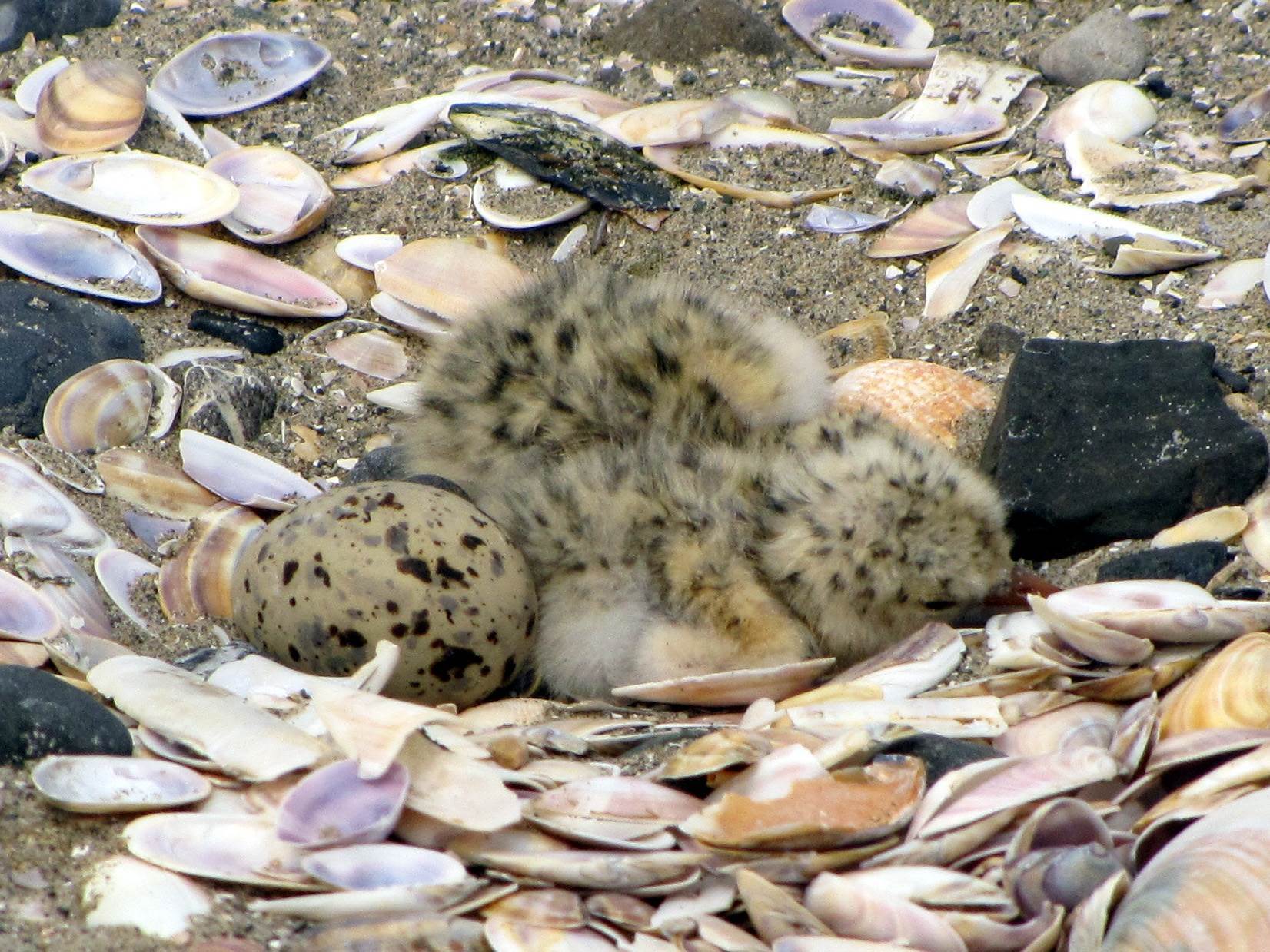Little Terns
Little Terns Sternula albifrons are the smallest and scarcest of the five tern species breeding in Ireland. They are long distance migrants wintering in West Africa and returning to Irish coasts in late April and early May and depart in late July or August. They differ from the other four species in that they regularly, and the majority of the population, nest on mainland sandy or shingle beaches rather than islands. This means that they are highly vulnerable to human recreational disturbance and sea level rise and, exposed to the complete suite of terrestrial mammalian carnivores. Conservation action, i.e. wardening, electric fencing and predator management is thus required at all sizeable east coast mainland colonies, particularly Baltray (Louth) and Kilcoole (Wicklow).
Little Terns form relatively small colonies along the west and east coasts of Ireland, with 14 of the 24 colonies found in 1995 on coastal islands and 10 colonies on the mainland. On the east coast there are colonies from Wexford to Louth, and on the west coast from Kerry to Donegal (Hannon et al., 1997). The number of breeding pairs of Little Terns on the west coast is less well known than the east, but in 2016 a minimum 100 pairs were reported in the NPWS Seabird Survey in Kerry, Galway, Mayo and Donegal (Newton et al. 2016). Primary sites on the east coast are better known. Those that have recently supported colonies of breeding Little Tern are Kilcoole (Co. Wicklow), Baltray (Co. Louth, this report), Wexford Harbour and Tacumshin (Co. Wexford), and Portrane/Rogerstown (Co. Dublin).
Little Terns have been recorded nesting in new breeding locations at Raven Point and a site known as “New Tern Island” off the Rosslare backstrand in Wexford Harbour since 2009. Additionally, there are reports of nesting at Cahore in recent years. Other sites on the east coast supported significant colonies in the past, but have had only intermittent breeding success in recent years. North Bull Island (Co. Dublin), and Buckroney (Co. Wicklow) are sites no longer used by Little Terns due to high levels of recreational disturbance. At Portrane, just a single pair successfully bred in the years 2009 to 2012. Two pairs were seen prospecting the site in May 2013 but no birds were noted on a subsequent visit in July. A pair was seen feeding an unringed fledgling there on July 30th, but the likelihood of these birds having dispersed from another colony cannot be discounted. In 2014 and 2015 one or more pairs may have nested successfully but in 2016 an untypically hot and sunny spell in early summer brought large crowds on to North Dublin beaches, including Portrane and this probably deterred Little Terns from settling. Despite the success at sites such as Baltray (up to 2014) and the apparent expansion to former breeding locations, Kilcoole is probably the only site on the east coast to have attracted nesting Little Terns every year since 1984.
Little Terns were first definitively reported breeding in county Louth in 1900 by RJ Ussher “Little Terns have laid on the coasts of Louth...” and this refers to records collected from 1866 (Ussher &Warren, 1900); unfortunately, Ussher does not mention the location in county Louth. Kennedy refers to a possible decline in Little Tern numbers since Ussher’s report but reports one unidentified area in county Louth with up to ten nests in 1946 (Kennedy, 1953). Subsequently Kennedy (1954) reported a possible decline of Little Terns, however Hutchinson (Hutchinson, 1994) thought that this may have more accurately reflected changes nesting site, a phenomenon well known in the ecology of Little Terns (Cabot & Nisbet, 2013).
Historically the Little Terns at Baltray have undergone a series of extremely poor breeding seasons and occasional rearing of a small number of young but with productivity hovering just above zero. Attempts were made to monitor the site from 1984 onwards, with observers noting that Little Terns continued to attempt to breed at Baltray but that breeding success was very low (Larry Lenehan, pers. comm.). Principally, breeding productivity of the colony was hampered by a combination of disturbance and predation by a range of nest predators. It is from this point that the project at Baltray began in 2007, initially run by a team of volunteers coordinated by Sandra McKeever and Margaret Reilly; this effort resulted in the foundation of the Louth Nature Trust with others, which enabled funding from the Heritage Council and NPWS. The implementation of wardening by dedicated volunteers, in conjunction with fencing to protect the colony, led to a dramatic improvement in the breeding success of the Little Terns at Baltray.
This work started in 2006 and since then the Louth Nature Trust has run the conservation scheme every year. Over that time we have received over 250,000 Euros in various funding , and engaged over 100 volunteers with over 100,000 hours of voluntary activity.

Little tern chick - 3 days old - at nest - Photo Breffni Martin (under NPWS license)

